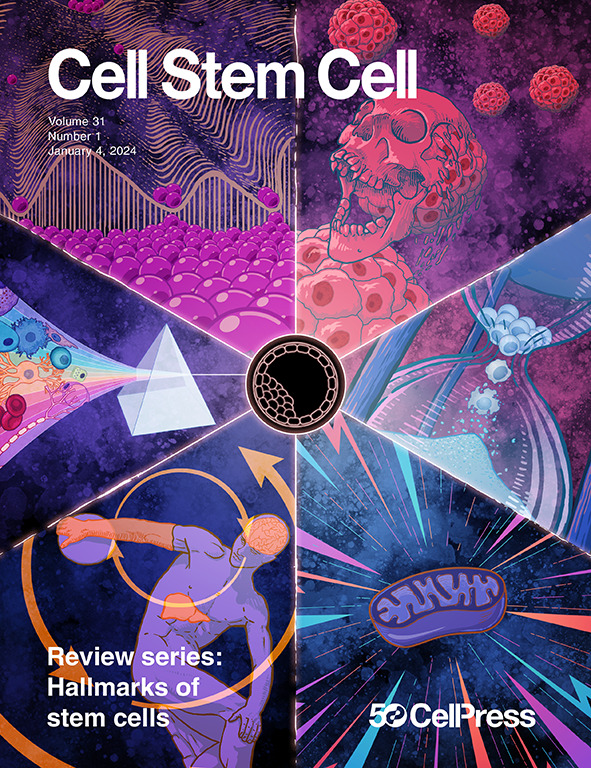通过内皮和壁系同时激活转录因子快速生成功能性血管类器官
IF 20.4
1区 医学
Q1 CELL & TISSUE ENGINEERING
引用次数: 0
摘要
类血管器官(VOs)是研究血管发育、疾病和再生医学的重要工具。然而,独立控制内皮和壁室仍然具有挑战性。在这里,我们提出了一种简化的方法,通过使用dox诱导或modRNA系统正交激活转录因子(tf) ETV2和NKX3.1,从诱导多能干细胞(iPSCs)中产生VOs。这种方法能够有效地实现内皮细胞(iECs)和壁细胞(iMCs)的共分化,在没有ECM包埋的情况下,在5天内产生功能性的3D VOs。暴露于ECM后,VOs进一步成熟,形成更大的结构化血管。单细胞RNA测序揭示了血管异质性,TF表达的时间调节允许动脉和血管生成iEC表型的调节。在体内,VOs植入免疫缺陷小鼠体内,形成灌注血管,促进后肢缺血和胰岛移植模型的血运重建。这些发现为血管建模、疾病研究和再生细胞治疗建立了一个快速、通用的VO平台。本文章由计算机程序翻译,如有差异,请以英文原文为准。

Rapid generation of functional vascular organoids via simultaneous transcription factor activation of endothelial and mural lineages
Vascular organoids (VOs) are valuable tools for studying vascular development, disease, and regenerative medicine. However, controlling endothelial and mural compartments independently remains challenging. Here, we present a streamlined method to generate VOs from induced pluripotent stem cells (iPSCs) via orthogonal activation of the transcription factors (TFs) ETV2 and NKX3.1 using Dox-inducible or modRNA systems. This approach enables efficient co-differentiation of endothelial cells (iECs) and mural cells (iMCs), producing functional 3D VOs in 5 days without ECM embedding. VOs matured further upon ECM exposure, forming larger, structured vessels. Single-cell RNA sequencing revealed vascular heterogeneity, and temporal regulation of TF expression allowed modulation of arterial and angiogenic iEC phenotypes. In vivo, VOs engrafted into immunodeficient mice, formed perfused vasculature, and promoted revascularization in models of hind limb ischemia and pancreatic islet transplantation. These findings establish a rapid and versatile VO platform with broad potential for vascular modeling, disease studies, and regenerative cell therapy.
求助全文
通过发布文献求助,成功后即可免费获取论文全文。
去求助
来源期刊

Cell stem cell
生物-细胞生物学
CiteScore
37.10
自引率
2.50%
发文量
151
审稿时长
42 days
期刊介绍:
Cell Stem Cell is a comprehensive journal covering the entire spectrum of stem cell biology. It encompasses various topics, including embryonic stem cells, pluripotency, germline stem cells, tissue-specific stem cells, differentiation, epigenetics, genomics, cancer stem cells, stem cell niches, disease models, nuclear transfer technology, bioengineering, drug discovery, in vivo imaging, therapeutic applications, regenerative medicine, clinical insights, research policies, ethical considerations, and technical innovations. The journal welcomes studies from any model system providing insights into stem cell biology, with a focus on human stem cells. It publishes research reports of significant importance, along with review and analysis articles covering diverse aspects of stem cell research.
 求助内容:
求助内容: 应助结果提醒方式:
应助结果提醒方式:


